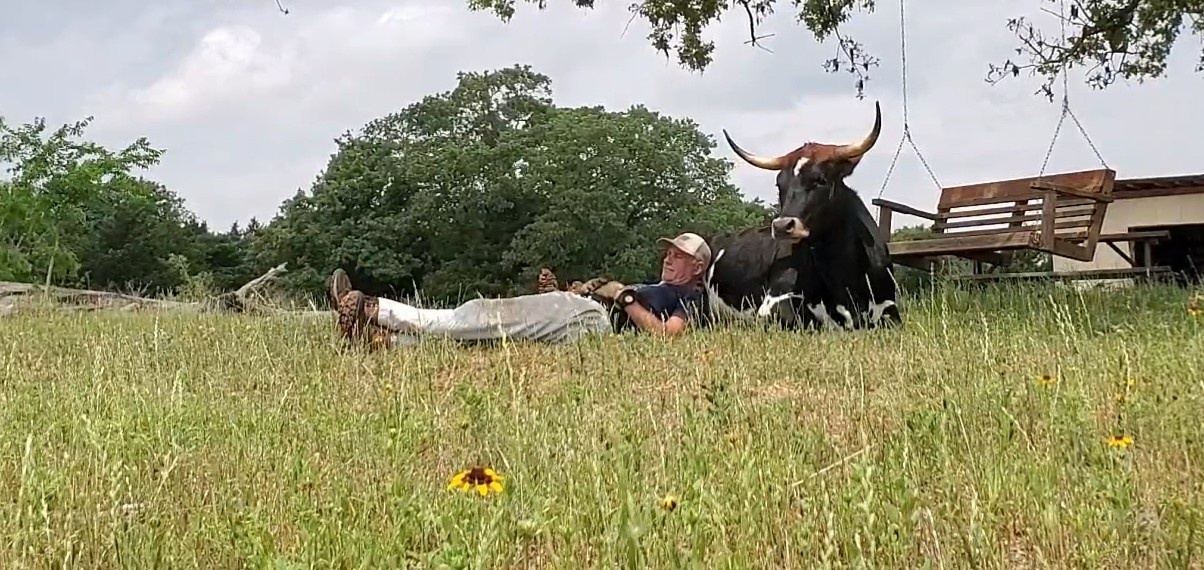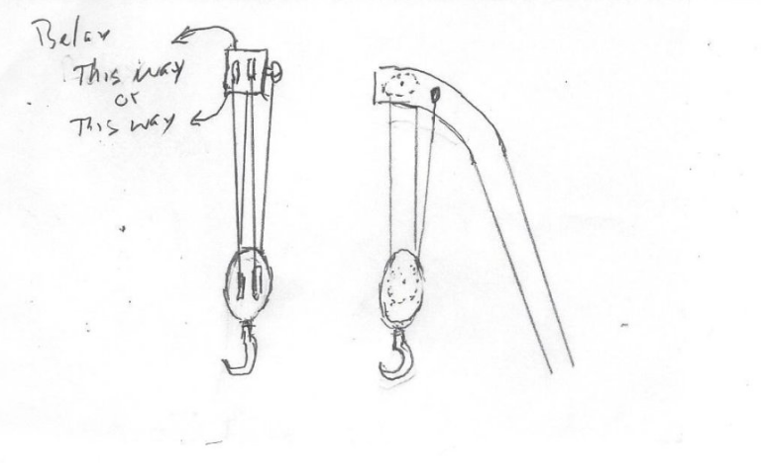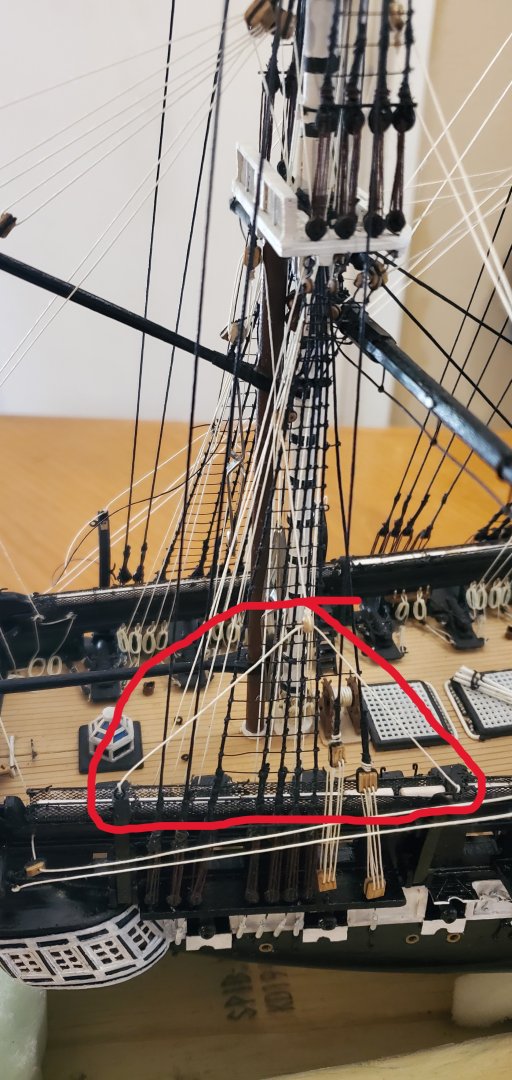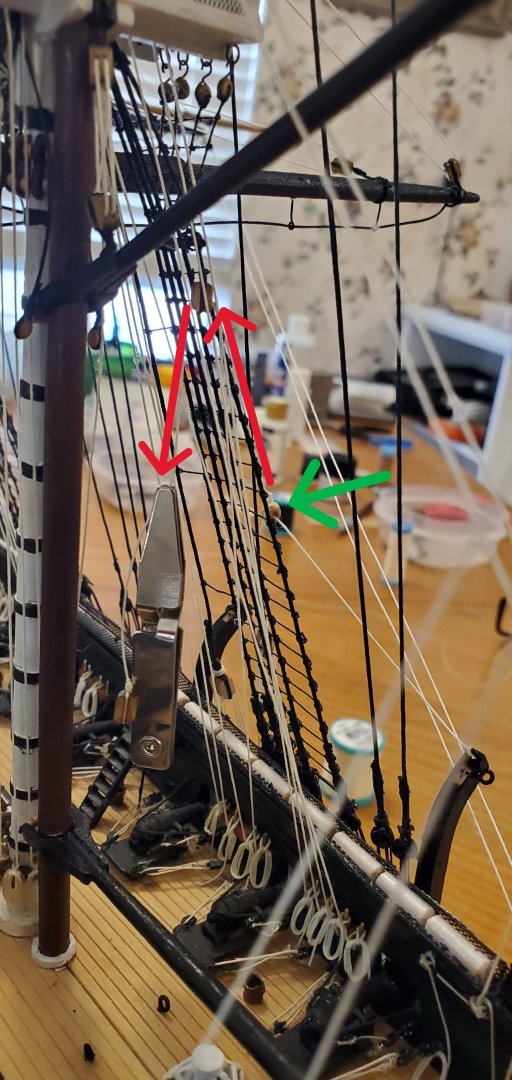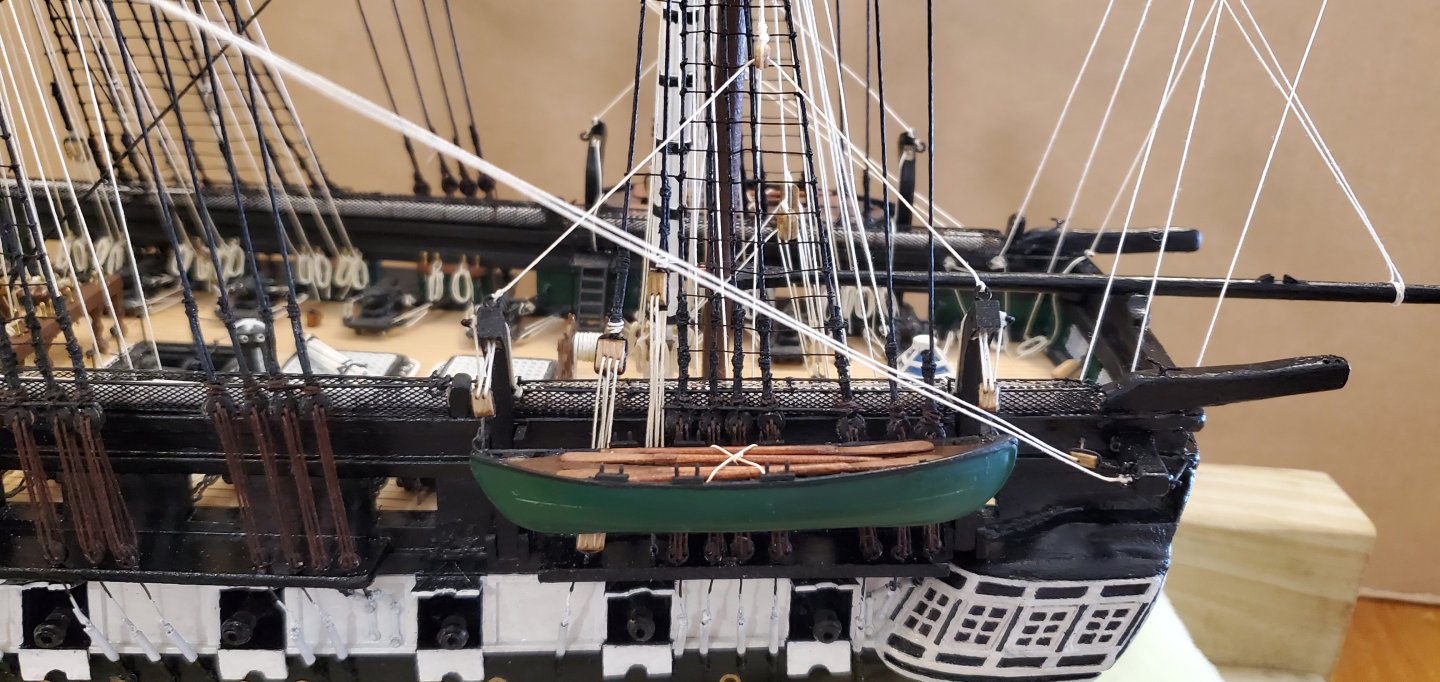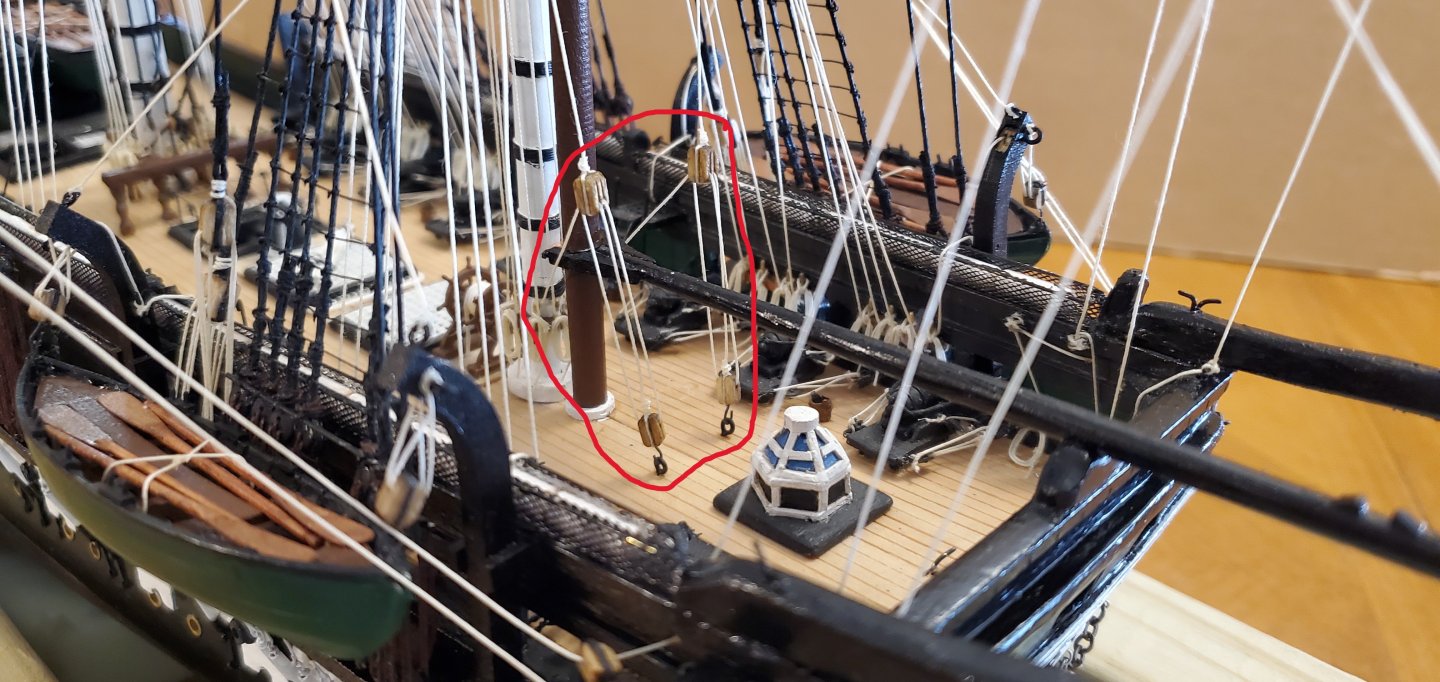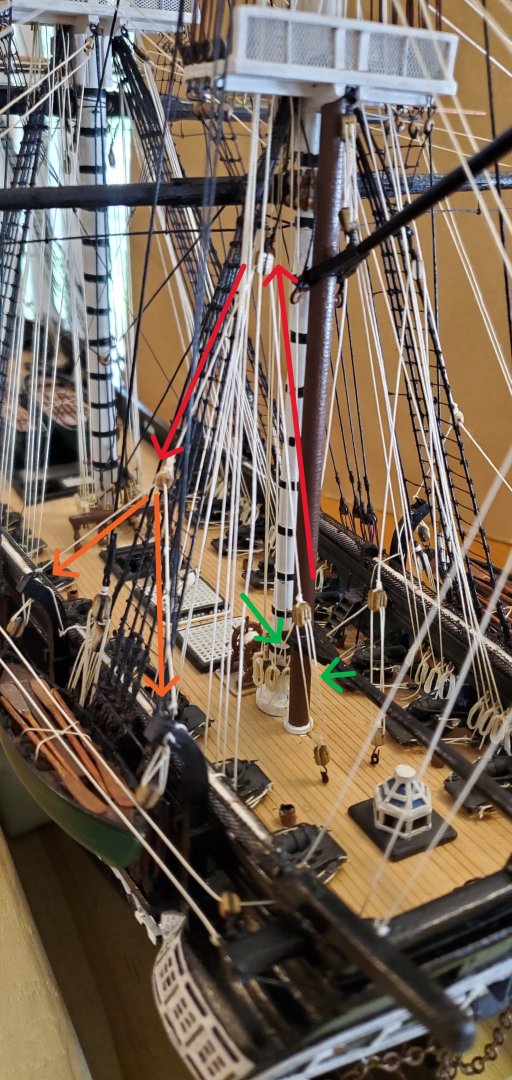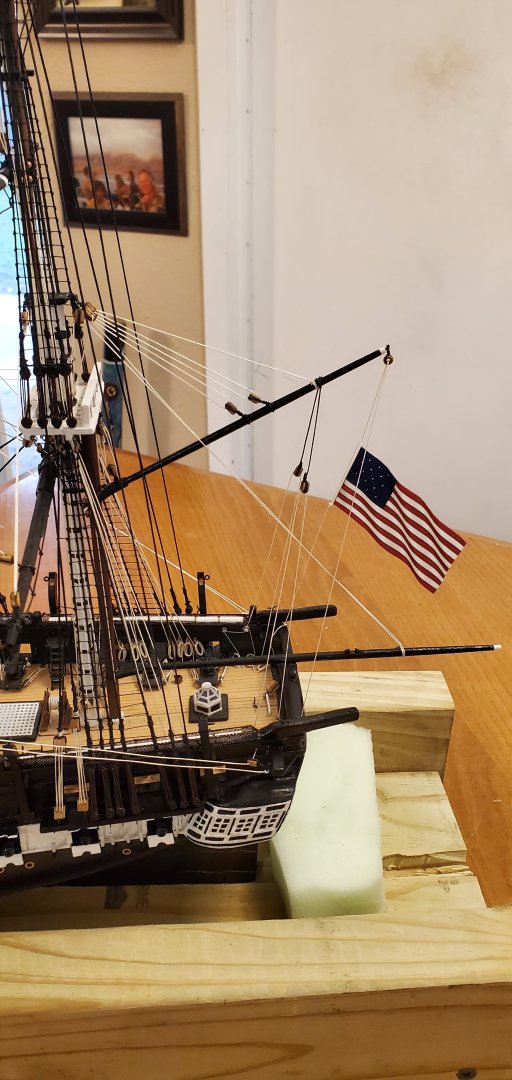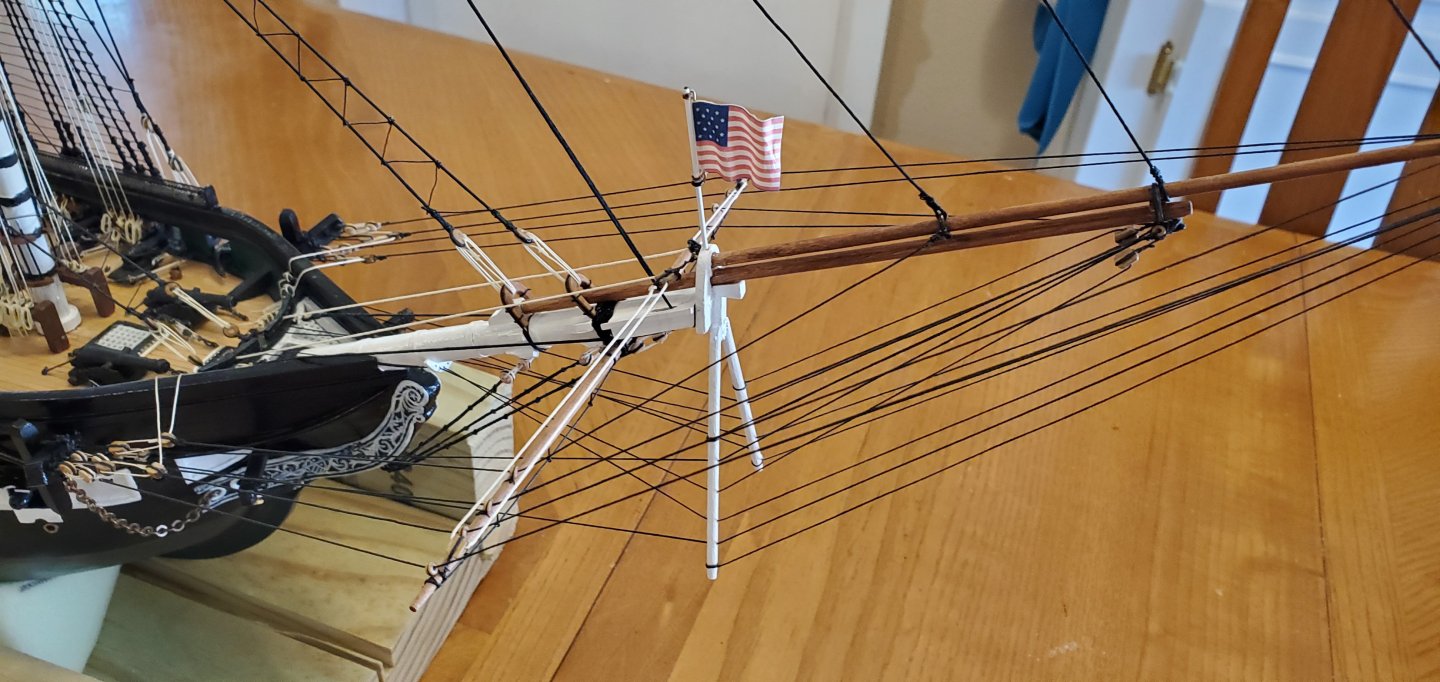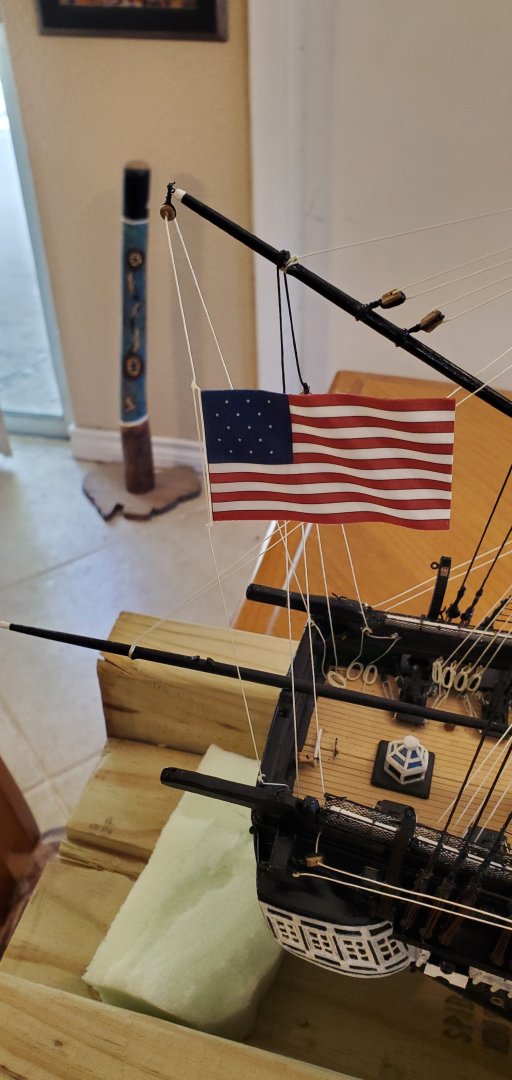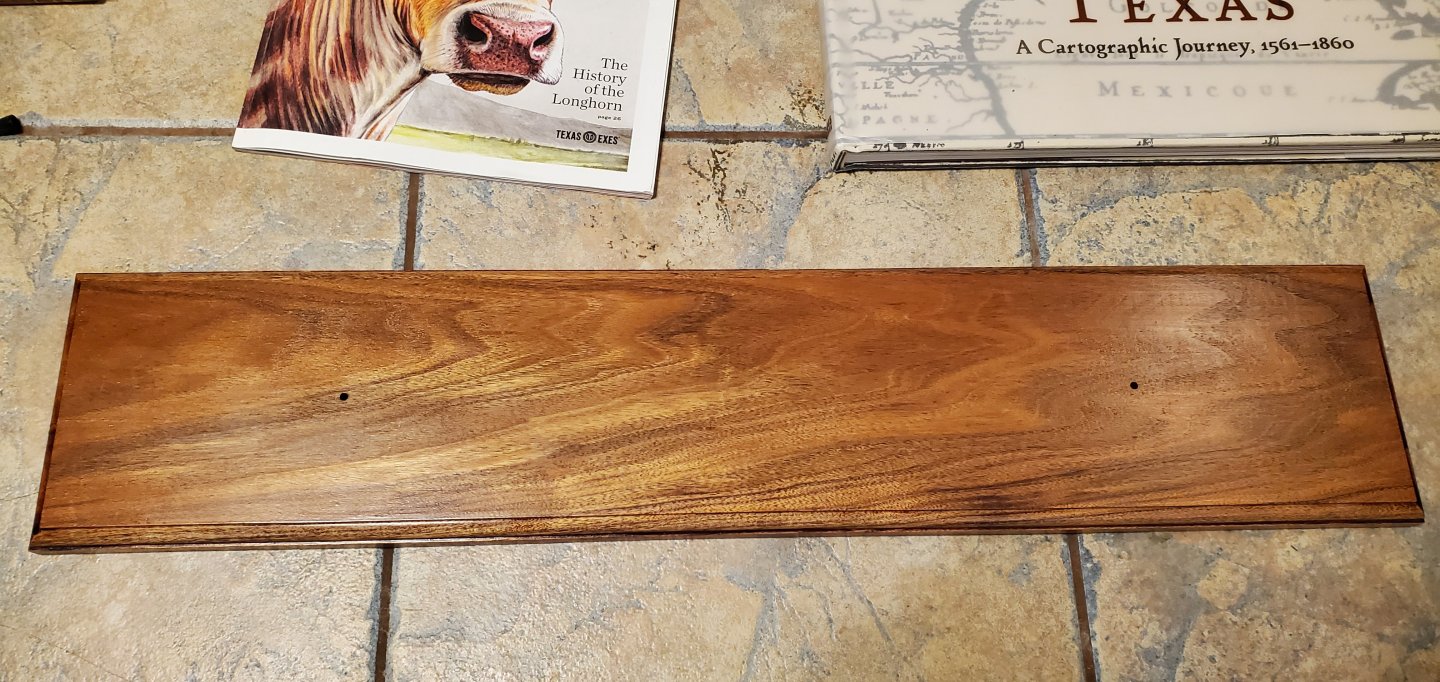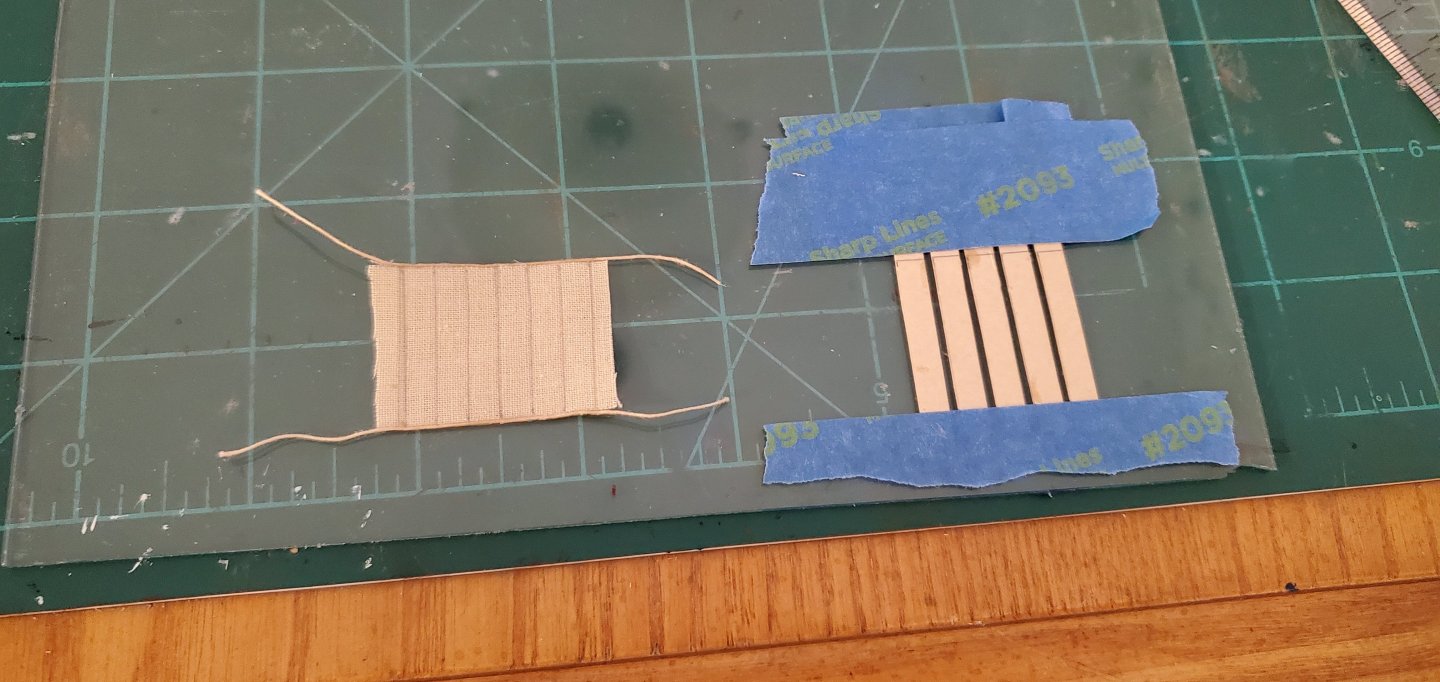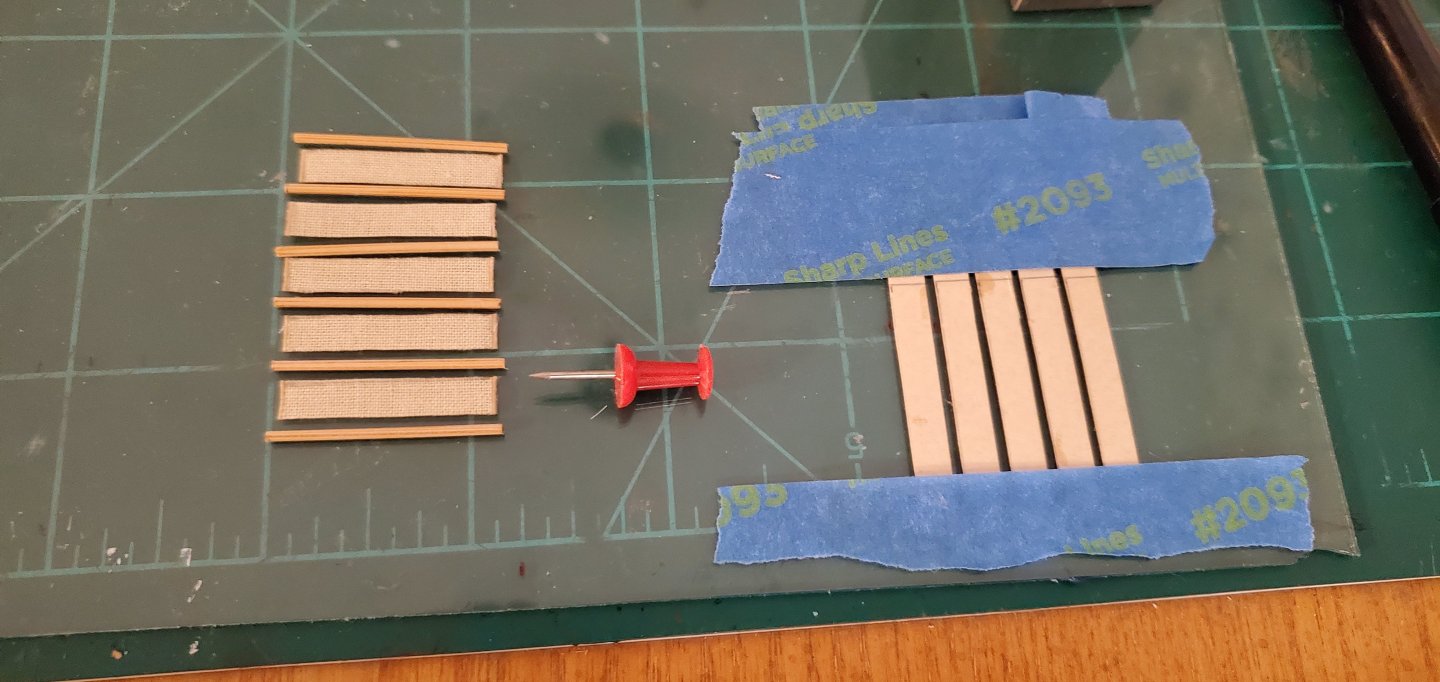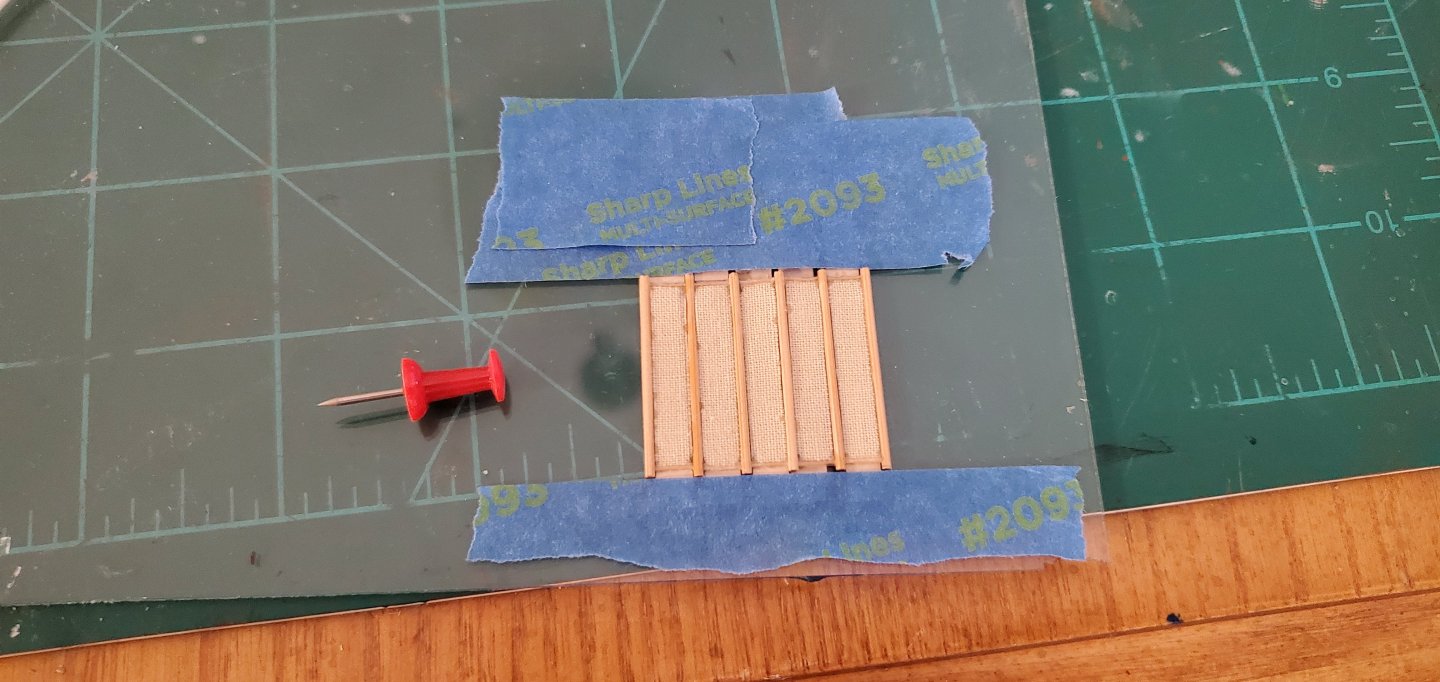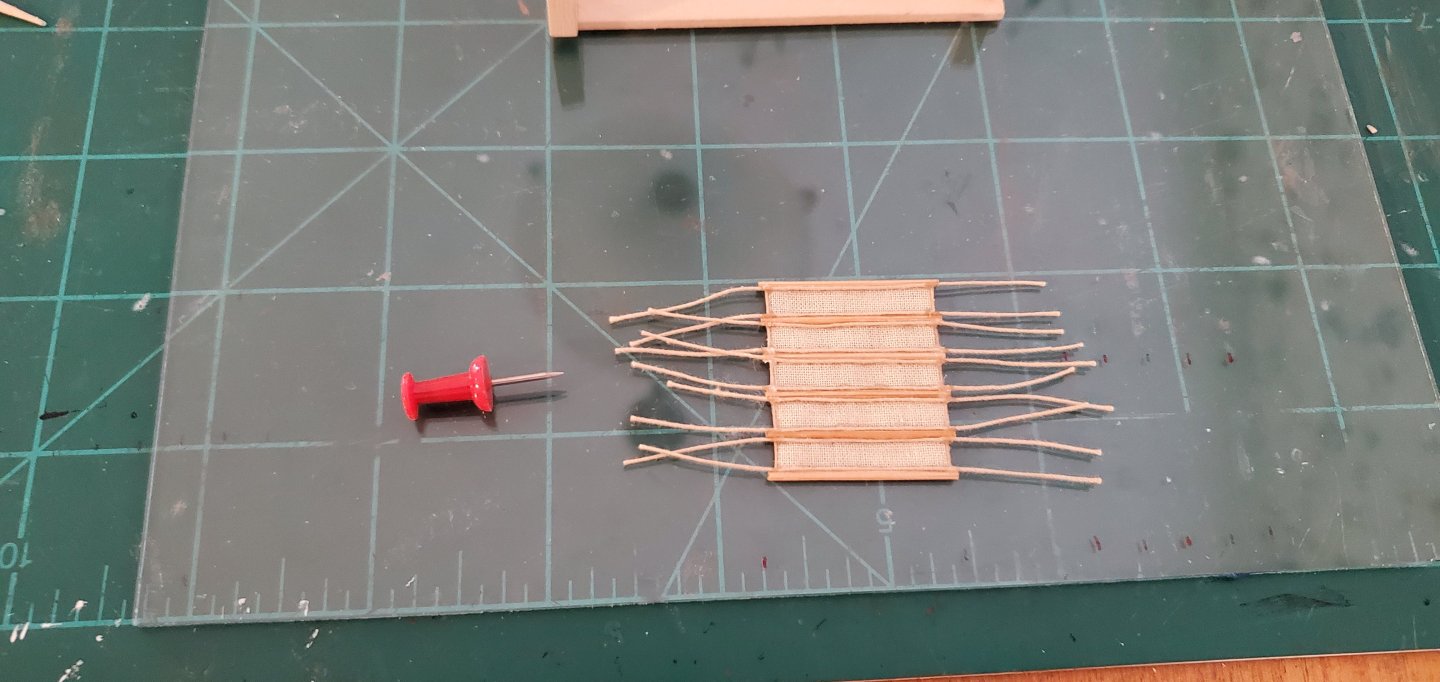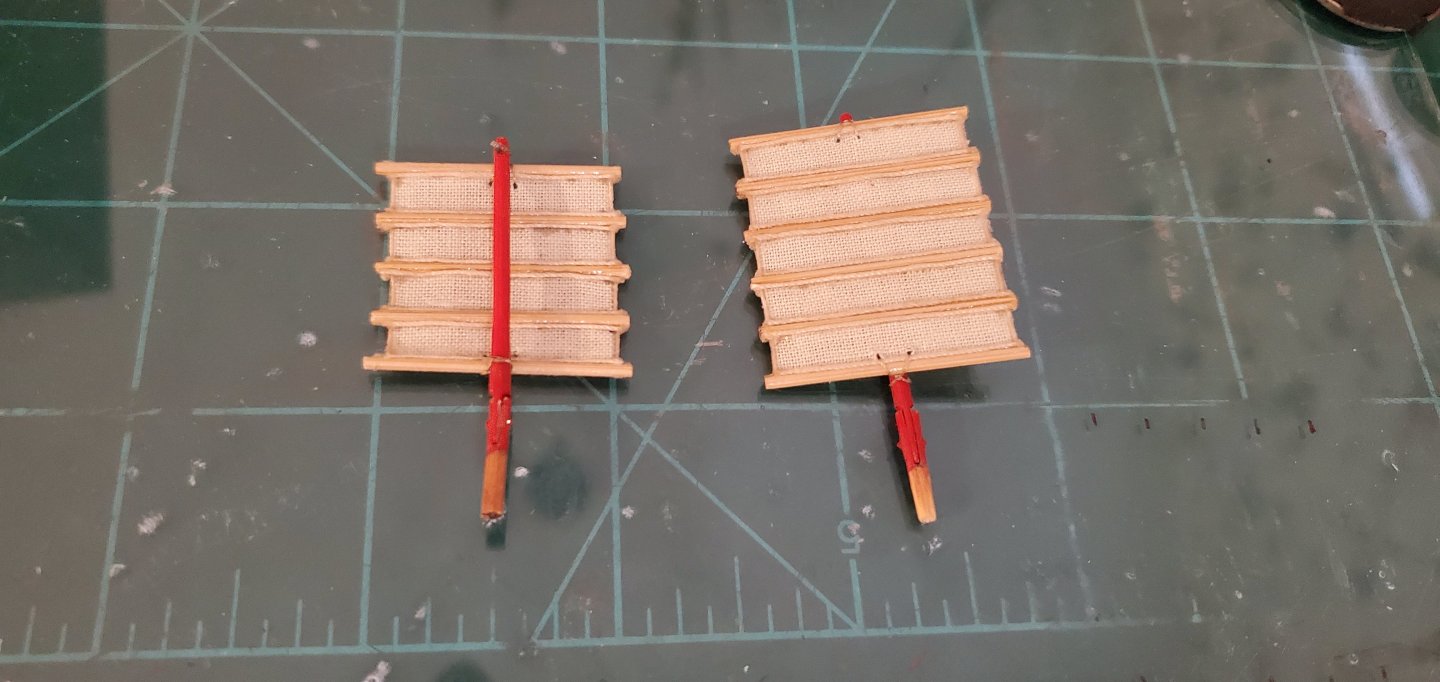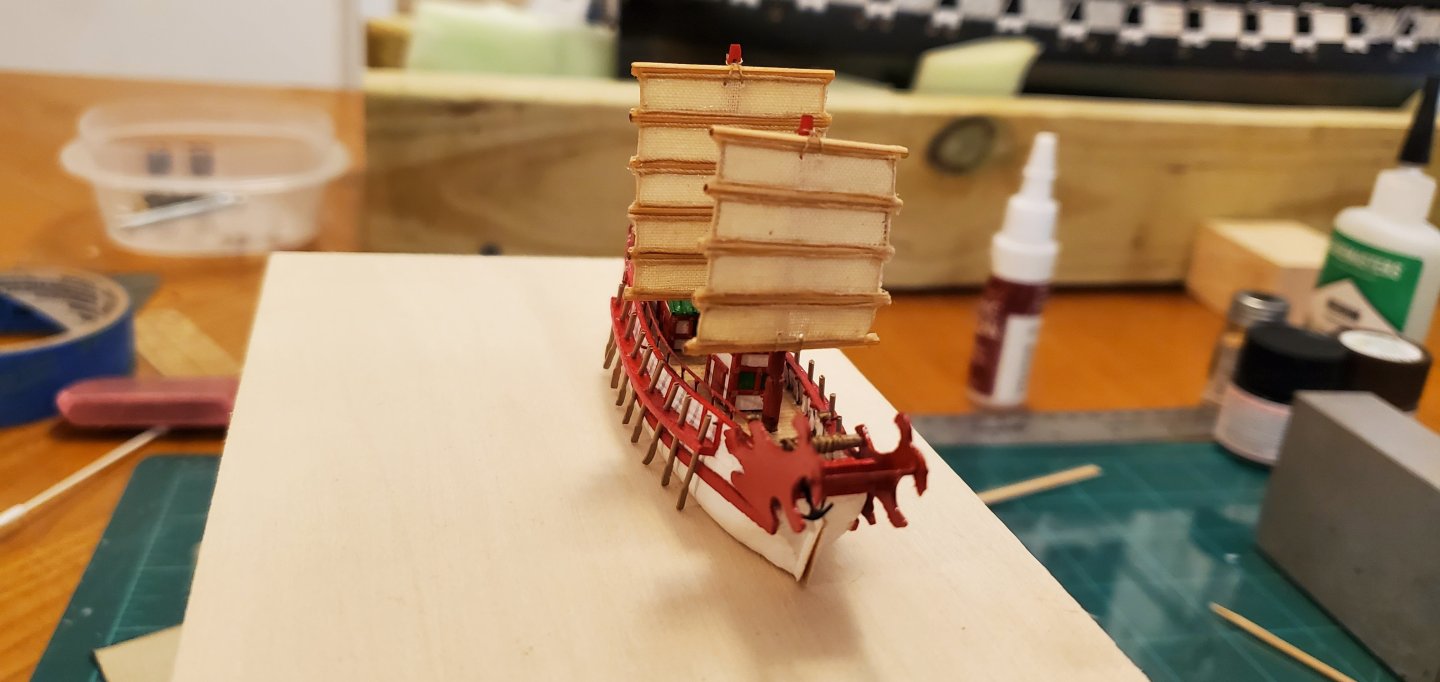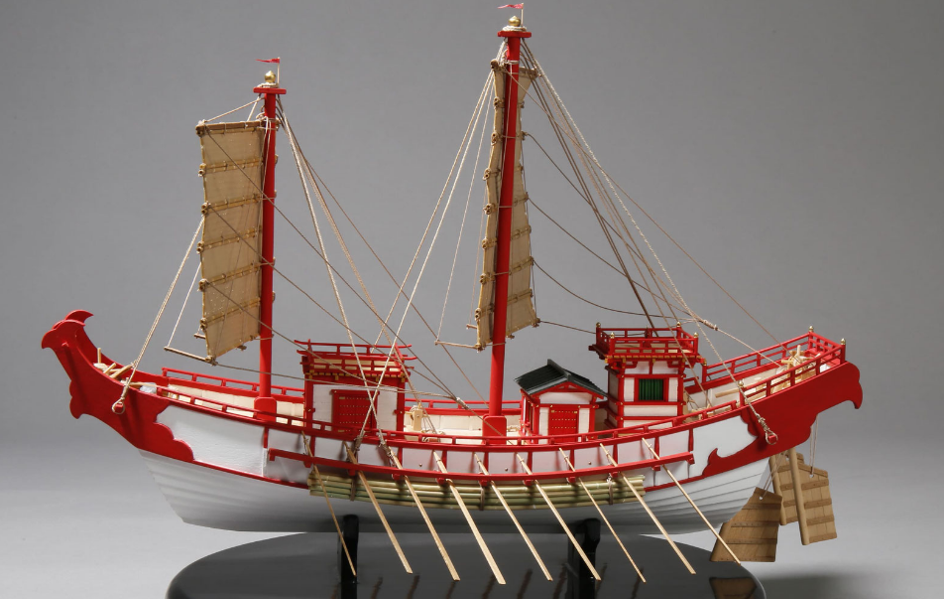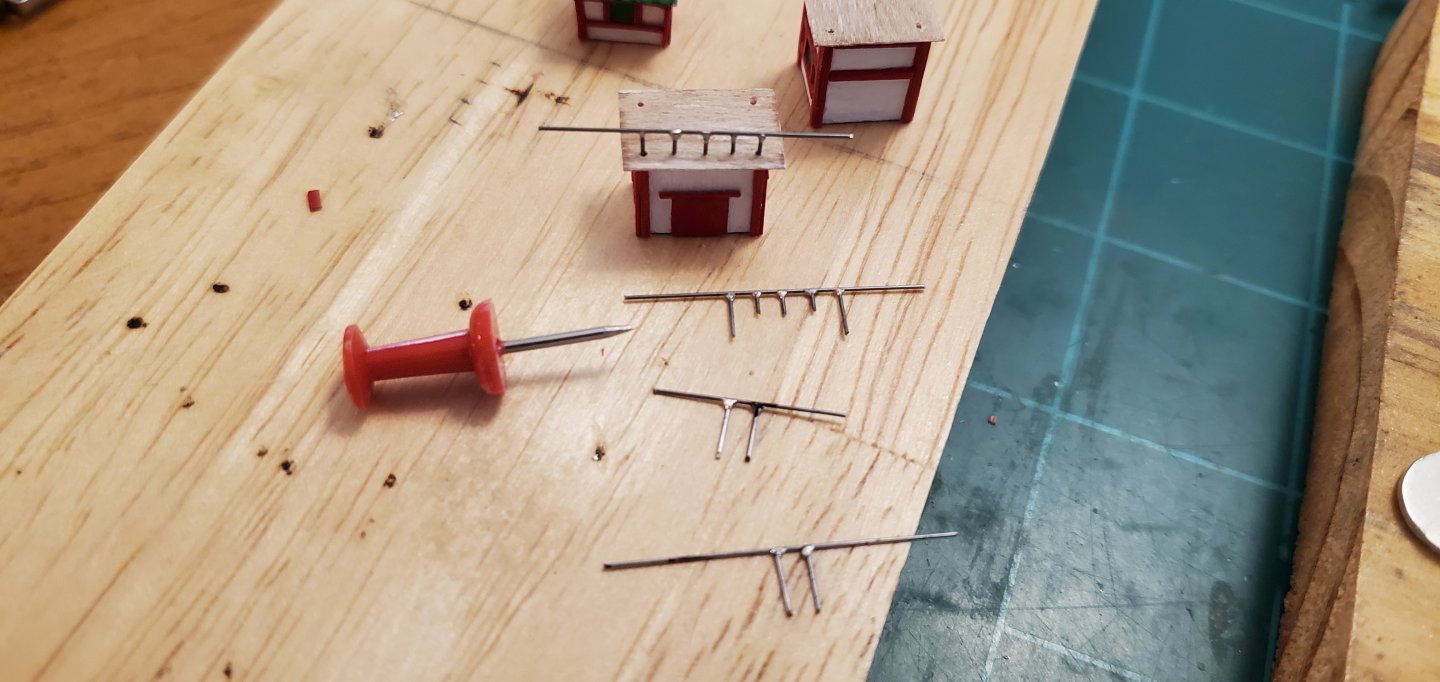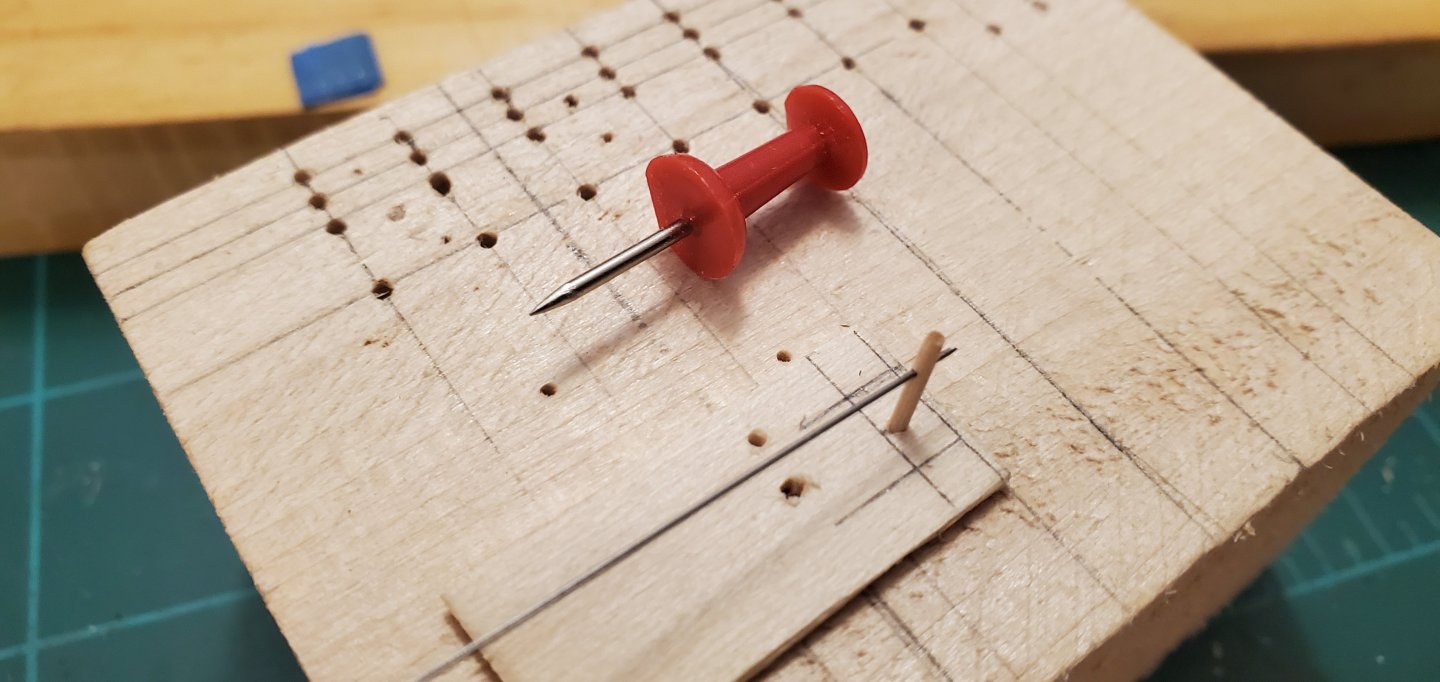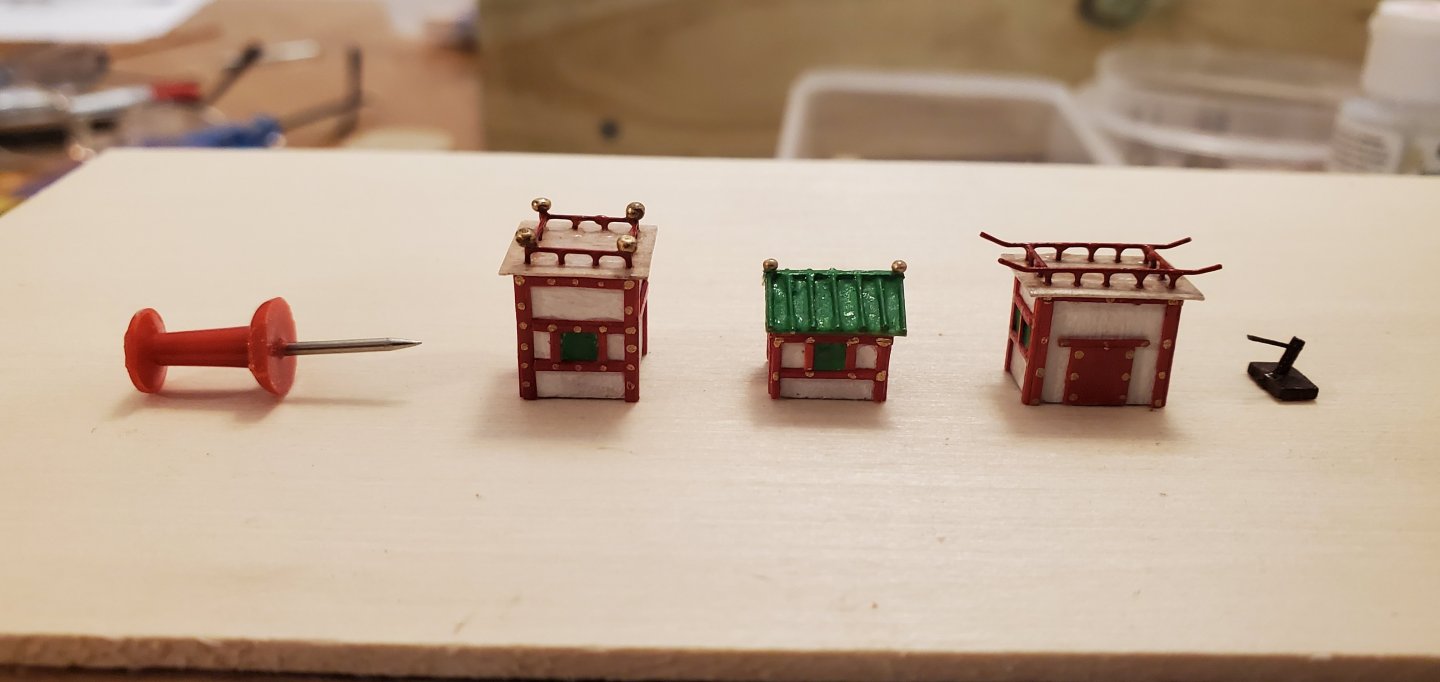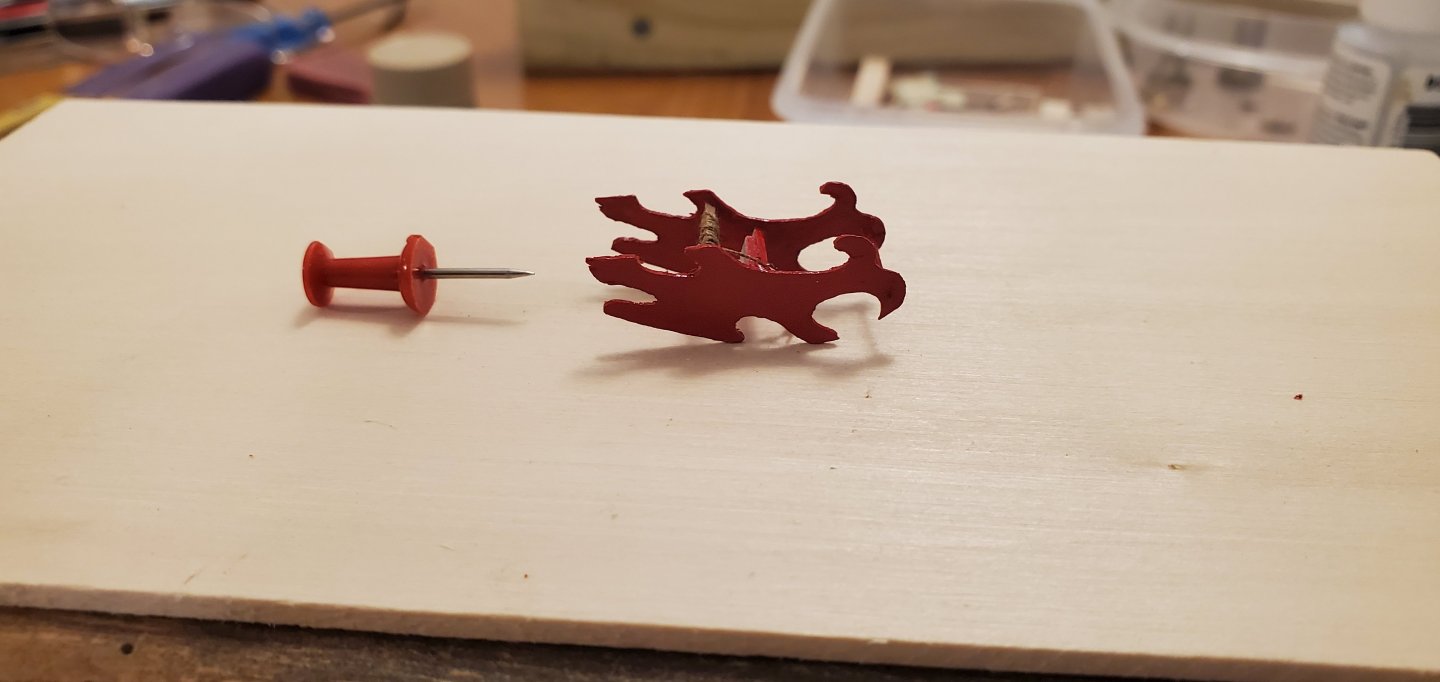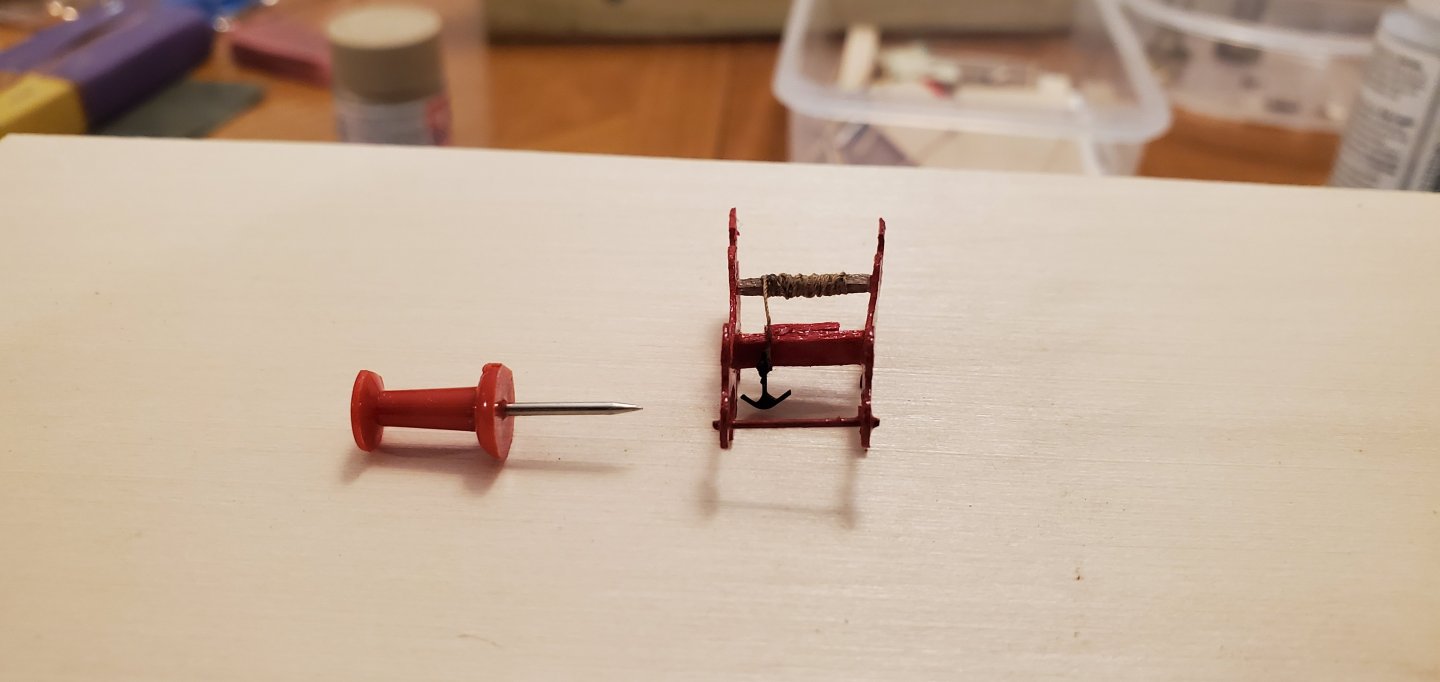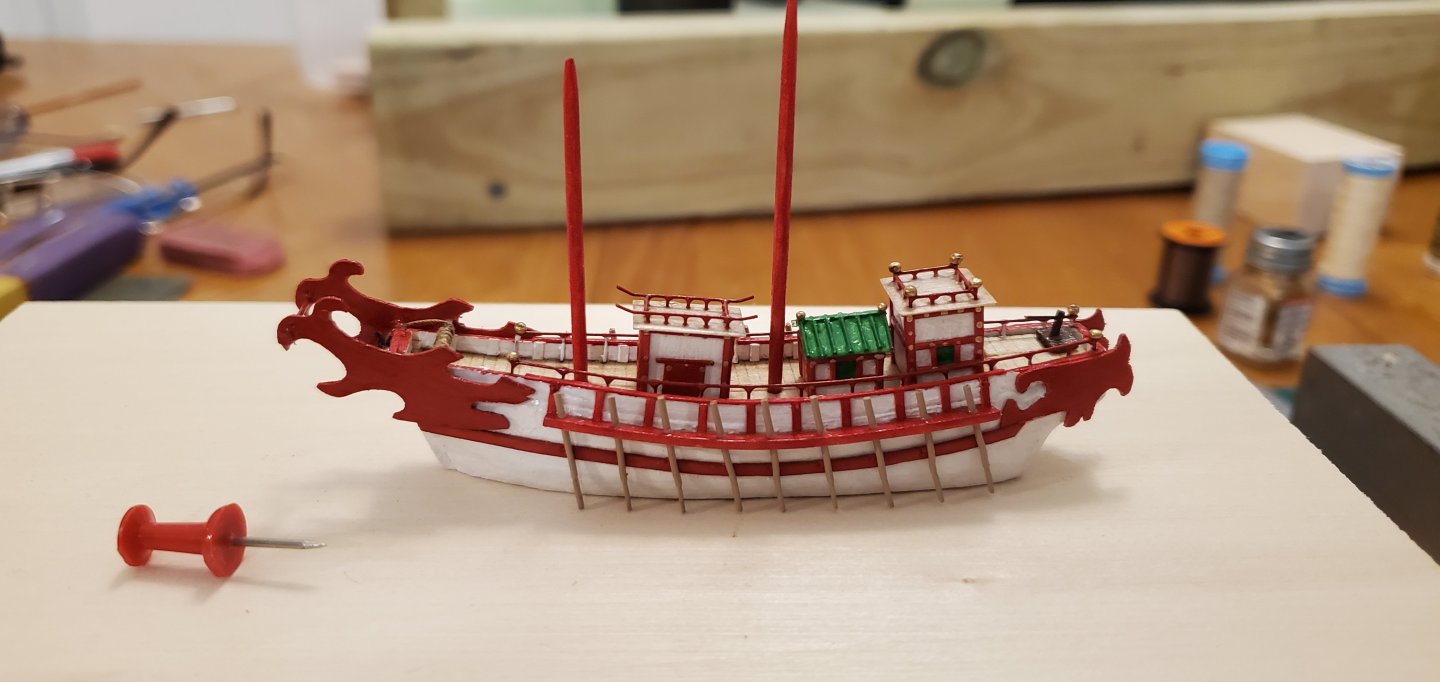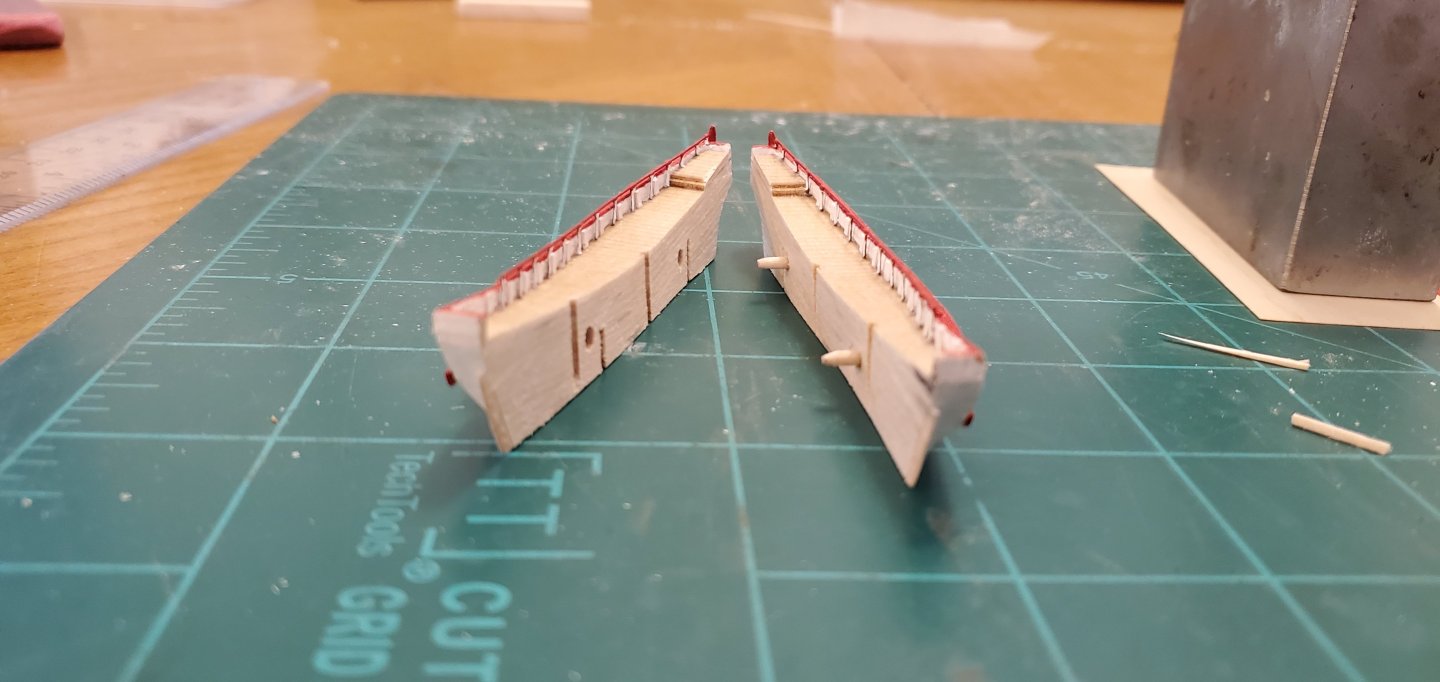-
Posts
1,911 -
Joined
-
Last visited
Content Type
Profiles
Forums
Gallery
Events
Everything posted by Glen McGuire
-
I give you a thumbs up even though I haven't got a clue what you were talking about that entire 2nd paragraph!!
- 221 replies
-
No way I would have been able to make it without @BANYAN's Bundy!
- 301 replies
-
- Constitution
- Bluejacket Shipcrafters
-
(and 1 more)
Tagged with:
-
Thanks to all for the interesting and educational discussion on flag direction above. With that issue resolved, time to rig the davits and hang the whale boats. The Bluejacket instructions do not address the davit rigging, so I used @xken's superb build log for guidance. The first thing I did was run a line connecting the eyehooks on the top end of each davit (circled in red below). I ran the line through a bullseye which is seized to another line that goes to the deck and is used to raise and lower the davits. The line that is seized to the bullseye (green arrow below) runs up thru a double block which is tied into the shrouds and then runs down to a lanyard that will tie into the empty eyehooks seen in the deck. At the time, I did not install the lanyard. I just tensioned the assembly with a small clamp. I would add the lanyard and tighten everything up after hanging the whale boats. Time to hang the whale boats. I was pretty much clueless as to how to do the small rigging between the end of the davit and the boat. I knew I had to rig a line through the double block mortised into the end of the davit and the double block hooked to the end of the whale boat, but I couldn't figure out how to do it. Shout out to Henry (a.k.a. @popeye2sea) for coming to the rescue. He sent me a sketch that cleared things up. I post the sketch below in case anyone else is as clueless about the rigging as I was. Here's the whale boat hung from the davits. After that, I circled back to install the lanyards on the deck and tighten everything up. The working end of the lanyard is tied off to the pinrail on the mizzen mast. Here's a picture of the entire davit rigging with arrows highlighting the 3 separate lines required for the rigging assembly.
- 301 replies
-
- Constitution
- Bluejacket Shipcrafters
-
(and 1 more)
Tagged with:
-
Hey Lynn. Reading through your posts here. it seems like you have a lot of doubt about whether or not you have the skills to finish this build. From what I've seen going thru this log and your Pram and Dory logs, you absolutely can do this! The first skill you need for this or any other ship model is tenacity. My sense is that you've got plenty of that. All the other skills come with practice and it's obvious that you are getting better with each step of each build. One thing I found early on (I've been doing this stuff for 4 years now so I'm still a relative newbie compared to the real pros out here), when you are working on a particular detail of a ship, you get so focused on that detail that every single flaw, even the tiniest one, jumps out at you. You think it looks horrible and everyone that looks at your work will think the same thing. But in reality, when you're finished with the build, all those flaws that you thought were so egregious at the time just melt away when you're looking at the completed ship. Trust me, our ships looks a whole lot better than we builders think they do while we are working on them! I also get the feeling that some parts of this build make you feel like they are pushing you to your limits. But you never know what you are capable of until you try something you've never done before. So I sincerely hope that you will continue to push yourself and continue to work on this project. You really have done a nice job so far, Lynn. I am 100% sure that you can finish it!
-
I appreciate that, Mark! I think the drive to my buddy's house is a little shorter than visiting you in Chesapeake Bay (may not be as scenic though!). 😃 To be honest, I do have a router myself. But I'm not that great with it and did not trust myself on such a fine piece of wood. Well, a blue norther came through and the wind changed directions after she docked! Actually, the flags can easily be flipped. So the family can decide how they would like them displayed.
- 301 replies
-
- Constitution
- Bluejacket Shipcrafters
-
(and 1 more)
Tagged with:
-
Seems like forever since I did any work on the Constitution. But I got my Kenoshi-sen to a point where I'm comfortable I can meet my deadline with it, so now I can focus on getting the Constitution across the finish line. I'm definitely on the home stretch here. Next on the list was getting the US flags flying. The original builder had mounted a small, paper flag on the bowsprit cap. I had to remove it when I rebuilt the broken bowsprit, but now it's back in its original place waving proudly forward. Looking at a variety of finished Constitution models, I saw many that had a larger flag flying from a halyard rigging off the gaff. I went to my favorite poaching box (Artesania Latina kit for the USS Constellation) and grabbed the flag from it. I've poached so much stuff from that box that if I ever decide to build the ship, I will probably have to buy an entire new kit. Or try and build it from scratch (YIKES!). I also found a beautiful piece of Patagonia rosewood that I'm going to use for the base. I had a buddy of mine rout the edges and I applied a few coats of poly for the finish. Next up is hanging the 3 whales boats from the davits.
- 301 replies
-
- Constitution
- Bluejacket Shipcrafters
-
(and 1 more)
Tagged with:
-
Agree with everything John said. Hoping and praying for the best, Keith.
- 732 replies
-
- Lula
- sternwheeler
-
(and 1 more)
Tagged with:
-
Sails are the last thing to make before she's ready to hit the bottle. The Kenoshi sails are similar to Chinese junk ship sails with the usage of numerous horizontal battens. When I first made those type of sails for my Zheng-he Treasure Fleet project 3 years ago, I just glued the battens to the back of a single square of fabric for each sail. In studying my reference picture for the Kenoshi, I realized that the sail is not a single piece of material. The sail actually consists of small, horizontal panels connected to and separated by the battens. That certainly added a new level of complexity to the build just when I thought I had things under control. But what the heck, we're all here for a challenge aren't we! So I started by penciling the outline of the sail on some light tan shirt cloth, drawing lines for the individual panels, and gluing a bolt rope on each of the vertical sides. I also made a small jig to help line up the panels and battens for assembly. Here are the cut panels and battens ready for assembly. To assemble the sail, I put the first batten down and just touched it in a few spots with a tiny amount of CA glue. Then I slid the cloth panel into place ensuring it made contact with each spot of glue. Rinse and repeat. Even though I was using the tiniest amount of glue that you could imagine, the bond seemed to be holding up ok. I had to be very sparing with the glue usage because of how much it darkened to cloth. In the pic below, it is quite obvious where I used a tad too much glue and it bled. But that was ok because I had a plan to cover up most of the bleeding. And here was the plan. I went on the inside of each batten and used fabric glue to lay down another line of thread that would sort of look like a bolt rope for the horizontal sides of each panel. This had the dual benefits of hiding most of the glue bleeding as well as offering more adhesion of the panel to the batten. Here's the completed fore and main sails secured to their respective masts. There are a few spots where the CA glue bleed was a little too much to cover up, but for the most part it worked out well. The main objective was for the sail to look pretty much the same (i.e. battens showing equally) whether you are looking at it from the front or back. Here's a couple of shots with all the deck stuff dry-fit in place along with the reference picture for comparison. The ship is pretty much ready for insertion into the bottle. However, I have not quite figured out the rigging yet. So I'm going to go back to work on the Constitution now while I try to figure out the rigging portion here.
- 106 replies
-
- Kentoshi-Sen
- bottle
-
(and 1 more)
Tagged with:
-
Welcome aboard!
-
Dang, I had to look that one up, Keith! Never heard of a Yokai before. Interesting, but unlikely that one of those will cross paths with this Kentoshi. At least I hope not!
- 106 replies
-
- Kentoshi-Sen
- bottle
-
(and 1 more)
Tagged with:
-
Slight change of plans. I got back from Connecticut earlier in the week and decided to get a little more work done here before running back over to the Constitution. With the hull finished and split, it was time to go to work on the deck fittings which mostly consist of 3 houses and a tiller. Nothing too complicated. Once again, the biggest challenge for me was soldering the tiny rails on top of 2 of the houses. Here's the tiller in process. And all 4 items complete with the exception of a little touch-up painting that I need to do. I also put together the large ornamental carving on the bow along the the windlass and anchor. I deviated a bit from the pictures. The pictures have the windlass situated beyond the bow and the anchor resting on the deck just inside the bow's bulwark. I decided to reverse things and have the windlass inside the bow and the anchor hanging just over it. I did this because this whole sub-assembly will be installed after the ship is in the bottle and I'm using the windlass as another guide to help me get the whole thing in the exact location. The ends of it will rest against the top of the bulwark. And here she is with all those things dry-fitted including the oars and 2 masts.
- 106 replies
-
- Kentoshi-Sen
- bottle
-
(and 1 more)
Tagged with:
-
Dang, Bob! I show up less than 2 weeks late and you're almost done with the thing! Warp speed. Looks great. Your paint job is fantastic.
- 46 replies
-
- Golden Hind
- airfix
-
(and 2 more)
Tagged with:
-
Those are good guesses, but here's what's really going on, Keith. Husband, wife, and teenage daughter were on a road trip. They got lost, took a wrong turn, and ended up on this floating, wooden contraption because the husband refused to stop and ask for directions. Wife got mad and ran up the stairs looking for help while husband stayed with the car and started talking to a couple of deckhands about how the Lions did in the NFL draft. Daughter yelled at the parents to stop arguing and look her way so she could take a picture and post on her Instagram account.
- 732 replies
-
- Lula
- sternwheeler
-
(and 1 more)
Tagged with:
-
Nice work on the 2-piece metal ring. Looks great and anyone looking at it would think it's a single piece.
- 312 replies
-
- Chile
- Latin America
-
(and 6 more)
Tagged with:
-
Superb work, Mike! Particularly the finish on the interior planks. great choice on the stains.
- 47 replies
-
- Annapolis Wherry
- Chesapeake Light Craft
-
(and 1 more)
Tagged with:
-
Glad to hear your hand is better and you're back in the shipyard, Mark. The planking is looking very nice.
- 251 replies
-
Thanks for the comment, Roel. That's an interesting idea to do a vertical Z-cut. I may play around with that before my next split-hull SIB. I've always used tapered locating pins (toothpicks) to help guide things in place when joining the hull inside the bottle. That Yi Soon Shin series looks like it would be worth watching. Thanks for reminding me why I live in Texas, Bob! Good analogy, Keith! And on that note, I'm going to jump out of this Kentoshi-sen airplane for a few weeks. I'm heading up to New London, CT for the Northeast Ship Modelers Show and when I get back, I'm going to dive back into the Constitution and see if I can finish her up.
- 106 replies
-
- Kentoshi-Sen
- bottle
-
(and 1 more)
Tagged with:
About us
Modelshipworld - Advancing Ship Modeling through Research
SSL Secured
Your security is important for us so this Website is SSL-Secured
NRG Mailing Address
Nautical Research Guild
237 South Lincoln Street
Westmont IL, 60559-1917
Model Ship World ® and the MSW logo are Registered Trademarks, and belong to the Nautical Research Guild (United States Patent and Trademark Office: No. 6,929,264 & No. 6,929,274, registered Dec. 20, 2022)
Helpful Links
About the NRG
If you enjoy building ship models that are historically accurate as well as beautiful, then The Nautical Research Guild (NRG) is just right for you.
The Guild is a non-profit educational organization whose mission is to “Advance Ship Modeling Through Research”. We provide support to our members in their efforts to raise the quality of their model ships.
The Nautical Research Guild has published our world-renowned quarterly magazine, The Nautical Research Journal, since 1955. The pages of the Journal are full of articles by accomplished ship modelers who show you how they create those exquisite details on their models, and by maritime historians who show you the correct details to build. The Journal is available in both print and digital editions. Go to the NRG web site (www.thenrg.org) to download a complimentary digital copy of the Journal. The NRG also publishes plan sets, books and compilations of back issues of the Journal and the former Ships in Scale and Model Ship Builder magazines.

